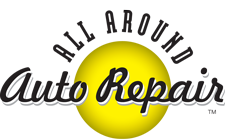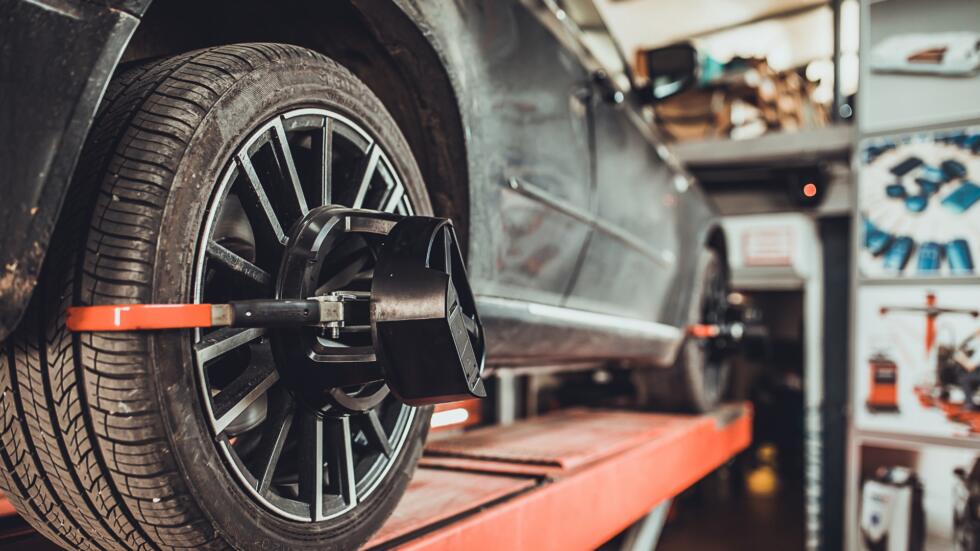At All Around Auto Repair, we understand the vital role that proper wheel alignment plays in the performance, safety, and longevity of your vehicle. Whether you drive your car daily for commuting or have a high-performance track car, wheel alignment is essential. In this blog, we’ll explore the importance of wheel alignment for everyday use cars, the impact it has on your vehicle’s performance and safety, and how it differs for track cars.
Understanding Wheel Alignment
Wheel alignment involves adjusting the angles of the wheels so that they are set to the car manufacturer’s specifications. These adjustments ensure that the wheels are perpendicular to the ground and parallel to each other. Proper alignment affects how your vehicle handles and can significantly impact tire wear, fuel efficiency, and overall driving safety.
Key Components of Wheel Alignment:
- Camber: The angle of the wheels when viewed from the front of the vehicle. Proper camber alignment ensures that the tire tread contacts the road evenly.
- Toe: The direction the wheels point relative to each other when viewed from above. Proper toe alignment prevents excessive tire wear and ensures stable handling.
- Caster: The angle of the steering axis when viewed from the side of the vehicle. Proper caster alignment enhances steering stability and cornering performance.
Why Wheel Alignment is Important for Everyday Cars
For everyday use cars, proper wheel alignment is crucial for several reasons, all of which contribute to a safer, more comfortable, and cost-effective driving experience.
Benefits of Proper Wheel Alignment:
- Improved Handling and Safety: Proper alignment ensures that your vehicle handles correctly, making it easier to steer and control. This is particularly important in emergency situations where precise handling can prevent accidents.
- Increased Tire Lifespan: Misaligned wheels cause uneven tire wear, leading to premature tire replacement. Proper alignment helps distribute the load evenly across all tires, extending their lifespan.
- Better Fuel Efficiency: Misalignment increases rolling resistance, which means your engine has to work harder to move the vehicle. Proper alignment reduces this resistance, improving fuel efficiency and saving you money at the pump.
- Smooth Ride: Properly aligned wheels provide a smoother and more comfortable ride by reducing vibrations and preventing the vehicle from pulling to one side.
Signs Your Wheels Need Alignment
Recognizing the signs of misaligned wheels is crucial for maintaining your vehicle’s performance and safety. Here are some common indicators that your wheels may need alignment:
- Uneven Tire Wear: If you notice that your tires are wearing out unevenly, with more wear on the inside or outside edges, it’s a sign that your wheels are misaligned.
- Vehicle Pulls to One Side: If your vehicle tends to pull to the left or right when driving on a straight road, it’s likely due to misaligned wheels.
- Steering Wheel Vibration: A vibrating steering wheel, especially at higher speeds, can indicate alignment issues or other problems with your wheels and tires.
- Off-Center Steering Wheel: If your steering wheel is not centered when driving straight, it’s a clear sign that your wheels are out of alignment.
The Alignment Process for Everyday Cars
At All Around Auto Repair, we use advanced alignment equipment to ensure precise adjustments to your vehicle’s wheels. The alignment process typically involves:
- Initial Inspection: Our technicians perform a thorough inspection of your vehicle’s suspension and steering components to identify any worn or damaged parts.
- Measurement: Using computerized alignment equipment, we measure the current alignment angles of your wheels and compare them to the manufacturer’s specifications.
- Adjustment: Based on the measurements, we make the necessary adjustments to the camber, toe, and caster angles to bring them within the specified range.
- Final Check: After the adjustments, we perform a final check to ensure that the alignment is accurate and that your vehicle handles properly.
Wheel Alignment for Track Cars: Key Differences
While wheel alignment is essential for everyday use cars, the requirements for track cars are different due to the high-performance demands and specific handling characteristics needed for racing.
Key Differences in Wheel Alignment for Track Cars:
- Performance-Oriented Settings: Track cars require alignment settings that enhance performance, such as increased negative camber for better cornering grip and toe settings that improve high-speed stability.
- Adjustable Components: Many track cars are equipped with adjustable suspension components, allowing for precise alignment adjustments tailored to specific tracks and driving styles.
- Frequent Adjustments: Due to the rigorous demands of racing, track cars often require more frequent alignment adjustments to maintain optimal performance and tire wear.
- Specialized Equipment: Aligning track cars often involves specialized equipment and techniques to achieve the precise settings needed for competitive racing.
Benefits of Proper Alignment for Track Cars:
- Enhanced Cornering Grip: Optimized camber settings provide better tire contact with the road during cornering, improving grip and reducing lap times.
- Improved Stability: Proper alignment settings, such as toe-in or toe-out, enhance stability at high speeds, making the car more predictable and easier to control.
- Even Tire Wear: Despite the aggressive driving conditions, proper alignment helps distribute the load evenly across the tires, extending their lifespan and ensuring consistent performance.
- Customizable Handling: Adjustable alignment settings allow drivers to fine-tune their car’s handling characteristics to suit different tracks and driving conditions.
Trust All Around Auto Repair for Your Alignment Needs
Whether you drive an everyday use car or a high-performance track car, proper wheel alignment is essential for maintaining optimal performance, safety, and tire longevity. At All Around Auto Repair, our team of skilled technicians is equipped with the latest tools and expertise to perform precise alignment adjustments tailored to your specific needs.
For everyday use cars, we ensure that your wheels are aligned according to the manufacturer’s specifications, providing you with a smooth, safe, and fuel-efficient driving experience. For track cars, we offer specialized alignment services that optimize performance and handling, helping you achieve the best possible results on the race track.
Don’t let misaligned wheels compromise your vehicle’s performance and safety. Visit All Around Auto Repair today for a comprehensive wheel alignment service and experience the difference that proper alignment can make. Trust us to keep your car running smoothly, no matter where the road or track takes you.




